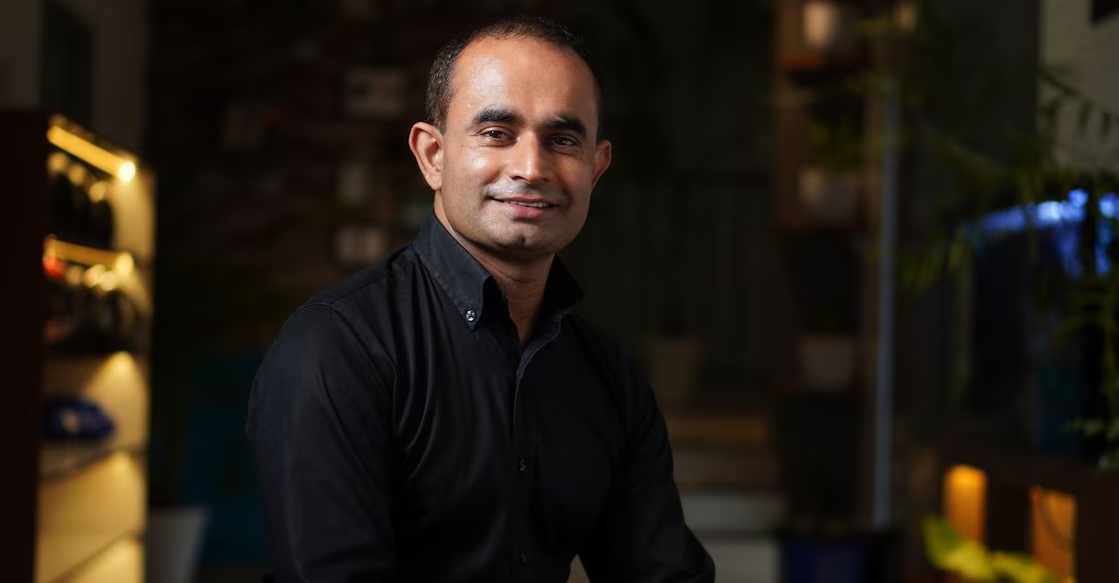Introduction: Fixing the Everyday First
In a world where many entrepreneurs are chasing the next big disruption, Sabeer Nelli chose a different path: fixing what’s broken in plain sight. While others launched startups built on buzzwords and hype, Sabeer focused on simplicity, usefulness, and service.
His story isn’t about overnight success or billion-dollar headlines. It’s about solving one problem at a time — and in the process, building something that now helps over a million small businesses across the U.S. and beyond.
As the founder of Zil Money, a fintech platform that streamlines payments, payroll, and cash flow for small and medium-sized businesses (SMBs), Sabeer proves that meaningful innovation often begins with the frustrations we overlook. This article will share how his approach can be a blueprint for others who want to make a difference—by focusing on action, not ambition.
Step 1: Find the Gap No One’s Talking About
Sabeer started his business journey not in tech, but in gas stations. Running Tyler Petroleum, he managed dozens of stores and hundreds of employees. The job was demanding, and one recurring pain point was clear: managing financial operations was slow, outdated, and stressful.
From cutting checks to coordinating payroll and paying vendors, the entire system felt stuck in the past. Traditional banks didn’t move fast enough for small businesses. Payment tools were too complex or too expensive.
Takeaway:
If something slows you down, frustrates your team, or forces you to jump through hoops—it’s a problem worth solving. Big opportunities are often hidden in “boring” inefficiencies.
Step 2: Build One Tool That Works Really Well
Before Zil Money became a full-service financial platform, it was just a check-printing tool. That was it. One function. But it worked — and it worked better than anything else available.
That simple solution helped small business owners avoid delays, save time, and get payments out fast. And when users started asking for more — like ACH transfers, payroll processing, and vendor payments — Sabeer listened.
Actionable Advice:
Don’t try to build an empire from day one. Build something small, useful, and reliable. Then improve it based on real feedback.
Step 3: Design for the User Who’s Too Busy to Learn
Sabeer understood that SMB owners wear many hats. They don’t have time to navigate complicated dashboards or attend hour-long demos. That’s why Zil Money is built to be intuitive from the start.
Every feature — from credit card payments to check mailing — is just a few clicks away. And when something goes wrong, the support team is ready to help.
Relatable Example:
Imagine Jane, who runs a bakery. Between suppliers, staffing, and sales, she can’t spend two hours figuring out how to pay her rent with a credit card. With Zil Money, she can do it in minutes.
Tip:
If your product or service isn’t obvious to a first-time user, it’s not ready. Simplicity creates trust — and repeat business.
Step 4: Solve the Cash Flow Crunch That Kills Growth
One of the smartest features Zil Money offers is converting credit card payments into checks or bank transfers. Why? Because many vendors still don’t accept cards — and many business owners don’t have extra cash lying around.
Sabeer’s platform lets entrepreneurs pay bills, even rent or payroll, using their available credit. This gives businesses time to collect payments without disrupting operations.
Practical Insight:
Cash flow issues don’t always mean a business is failing. Often, they just need better timing and tools. Solving that timing gap builds real loyalty.
Step 5: Stay in the Feedback Loop — Always
Zil Money didn’t grow because of flashy marketing or viral ads. It grew because it kept evolving to meet customer needs.
When users wanted bulk payment options, the team built them. When they needed better QuickBooks integration, it was added. Zil Money became more than a product — it became a partner.
Actionable Step:
Talk to your users weekly. Run a short survey. Set up a feedback channel. Use what you hear to build better experiences.
Step 6: Create a Mission That Attracts Talent
Sabeer’s success isn’t just about smart software — it’s about strong teams. At Zil Money, the mission is clear: empower small businesses to grow with less financial stress.
That clarity attracts team members who care. Engineers, marketers, and customer support staff all know they’re working on something meaningful.
Advice for Entrepreneurs:
People don’t follow vision alone. They follow missions that matter. Define yours clearly and communicate it often.
Step 7: Build a Business That Outlives the Buzz
While the fintech world shifted toward cryptocurrency and flashier trends, Sabeer stayed focused on fundamentals. Reliable payments. Cash flow support. Real user needs.
That’s why Zil Money is thriving today — because it solves problems that will still exist five years from now.
Reflection Point:
What problems will your customers still face in five years? Build for those, and you’ll build something that lasts.
Conclusion: You Don’t Need to Be First — You Need to Be Useful
Sabeer Nelli’s journey proves that the best businesses don’t come from lucky breaks or flashy ideas. They come from rolling up your sleeves, finding what’s broken, and fixing it better than anyone else.
If you want to build something that lasts, follow Sabeer’s lead:
- Start small
- Solve real problems
- Keep it simple
- Focus on cash flow
- Listen to feedback
- Lead with purpose
- Stay consistent
You don’t need to reinvent the wheel. You just need to make it smoother, faster, and more affordable for the people who use it every day.
That’s the path Sabeer Nelli took — and it’s a path anyone can follow.











